Religion and food may seem like unlikely partners, but the pairing has had a profound role in shaping American identity — who we are, what we believe, and how we live. Whether it's established religions or fringe cults, these beliefs have been the source of rules for eating since ancient times. That influence stretches into the present day. That's the case Christina Ward makes. Ward, who is also the vice president and editor of publisher Feral House, has previously explored advertising cookbooks and food preservation.
Her latest book is Holy Food: How Cults, Communes, and Religious Movements Influenced What We Eat — An American History.
KCRW: Whether it's Catholics not being allowed to eat meat on Fridays, halal and kosher restrictions for Muslims and Jews, or Pythagoras telling his followers to avoid fava beans because they caused gas (and because he thought they contain the souls of dead people), rules have always existed around what foods humans should and shouldn't consume. Why do you think these rules have always existed? And to what extent do they have a practical intent, as in keeping food safe, versus a spiritual intent?
Christina Ward: I think when you look back to the origins and the pre-history, a lot of it comes from the safety aspect. It was easier to couch some of that in the holiness and the spirituality. The end result is that if you followed some of those food safety things that are inherent in the kashrut, the very early Jewish food rules, you would end up with pretty good hygiene and a food-safe environment.
On top of that, in those pre-science days, people weren't sure where the food was coming from. You knew you could eat some plants, you knew you could eat some animals. That's kind of a miracle if you don't know how those plants and animals came to be. So that's also part of the origin of the spiritual beliefs. You thank God, you thank the creator of the world around you for the food you're eating. It's kind of a twinned origin of how it got started.
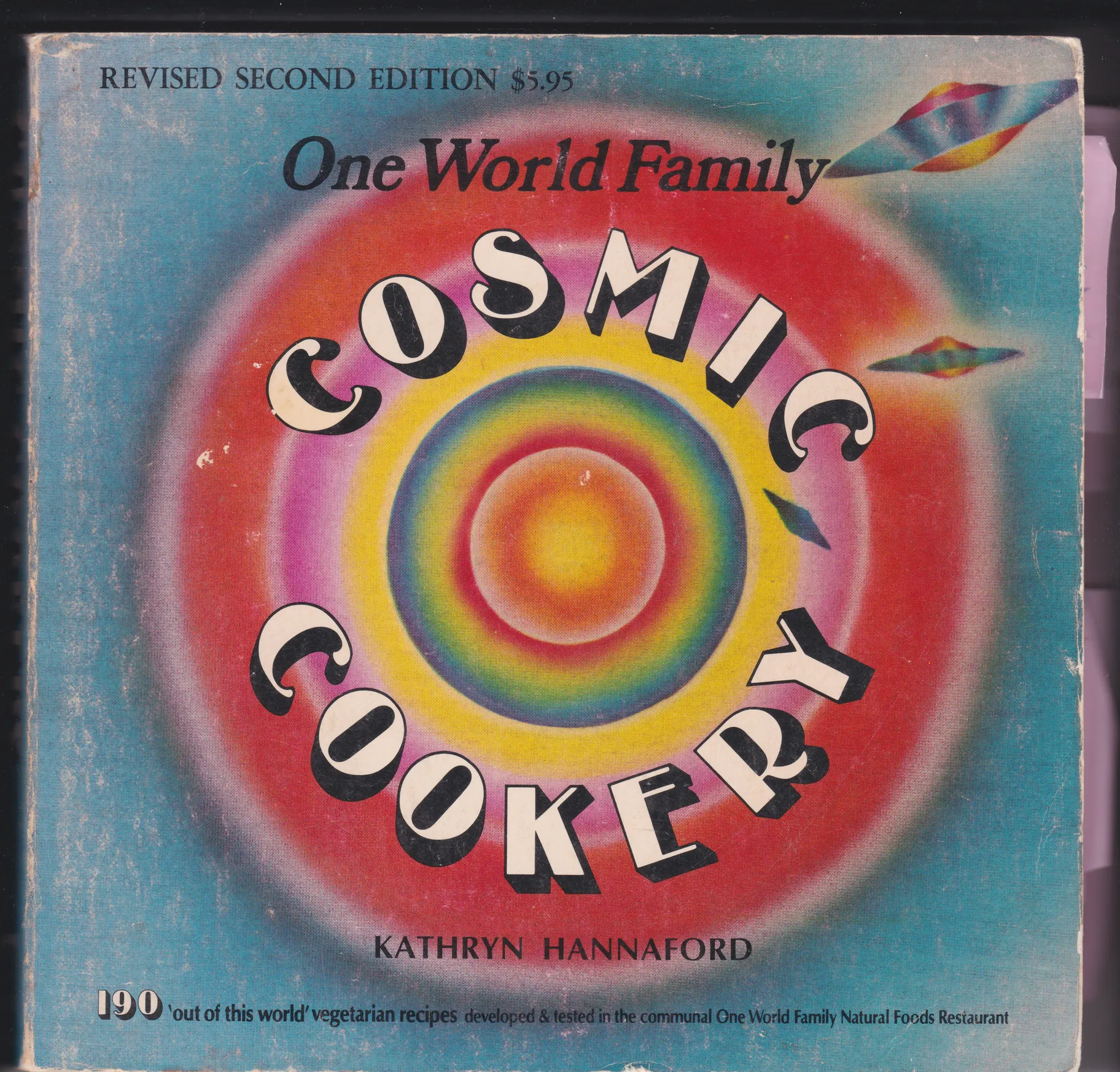
Front cover of the 1974 edition of One World Family: Cosmic Cookery. Photo courtesy of Christina Ward.
Aside from food safety and health, there's been this idea across many belief systems that the human appetite needs to be controlled. Can you give us some examples of where this crops up? What is controlling one's appetite supposed to achieve?
Appetites are interesting. We think about Thomas Aquinas, and we think about the seven deadly sins but Aquinas got it from Aristotle, this notion that any type of excess reflects badly on our morality. Really early, we started controlling what types and how much food we ate. In the realm of early democracies, I'm thinking back to ancient Greek culture and ancient Roman culture, one of the markers of excessive wealth was gluttonous feasting. So when the Greeks start thinking about what democracy is, that type of excess is a harbinger of royalty and of the elite, and you want to avoid that. There were these impulses to control the appetite, to be a better human and also as a reflection of the type of society we wanted to build.
Do you see any links between ancient beliefs about controlling appetites and modern day wellness culture? I ask because so much talk about "clean eating" and "wellness" often seems to come with a certain amount of judgment that makes it feel like a moral imperative.
Yeah, that morality part, we still embrace that, even if we're not consciously aware of it. Oftentimes, we see someone in the grocery store who's maybe carrying more weight than we think they should and we make silent judgments about what's in their shopping cart. So we haven't left this.
A lot of modern wellness culture is still rooted in the seven deadlies, in this idea that excessive consumption is a reflection of the core morality of that person. And then [there's the idea] that someone who is unable to control their appetite is somehow morally flawed. Even in the face of the science that shows there's so much more actual genetics in the physical reasons why people carry extra weight, it's hard to resist that. A few years ago, it became really popular in general and in Protestant circles in churches… they were hosting religiously-based weight loss clinics that were really unhealthy because they were about excessive caloric restriction. But it was also using biblical scripture to essentially say, "God says, 'Don't eat so much.'"
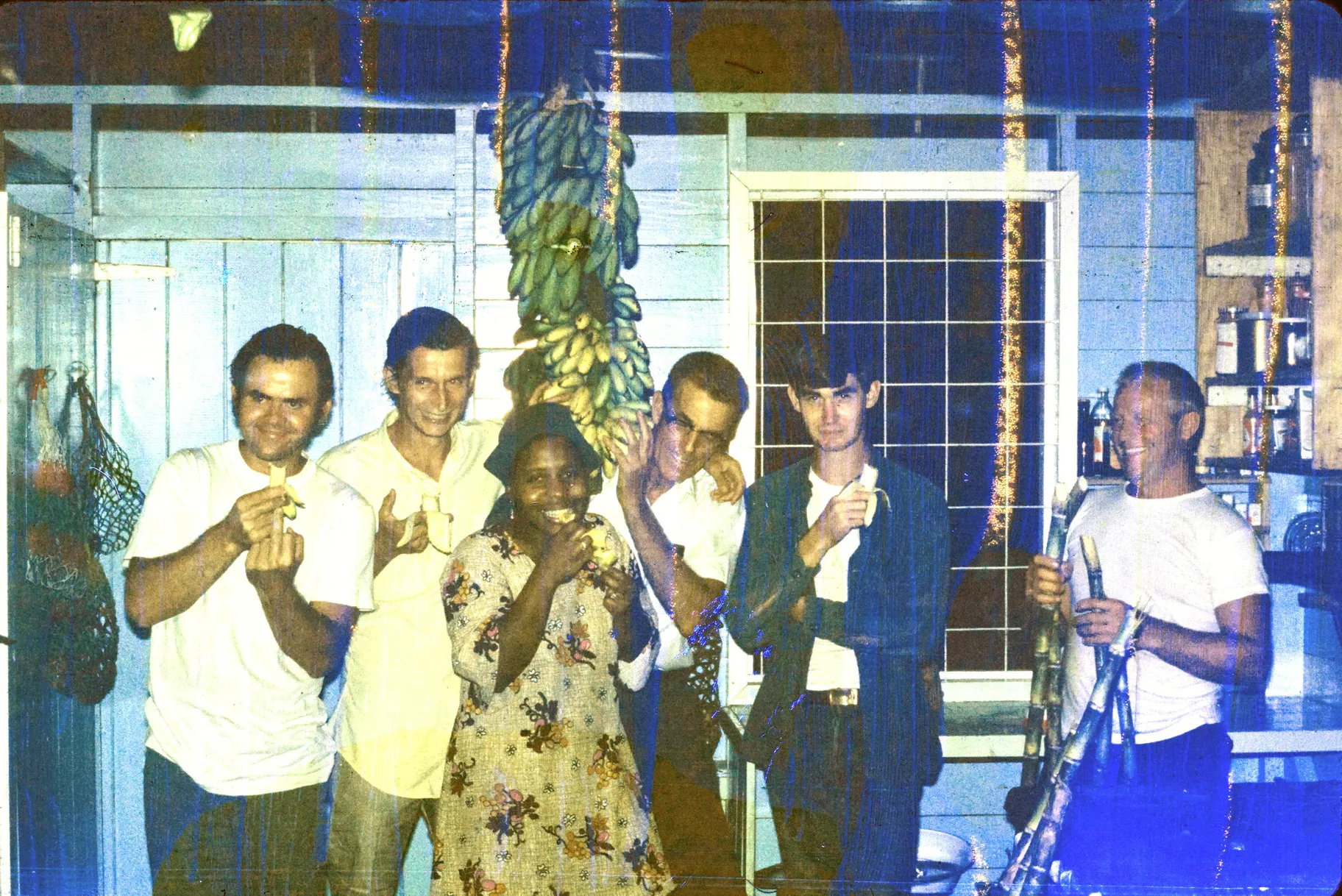
Jonestown pioneers celebrate the banana harvest, c. 1975. Courtesy of The Peoples Temple Collection at San Diego State University Special Collections.
There were multiple waves of religious revival known as the Great Awakening that spread through the US. When did they occur and what food fads did they inspire?
There are two Great Awakenings. The first Great Awakening, not so many food things. But the Second Great Awakening, wow, everybody decided that they were going to have rules about eating. They were based on the earlier [rules in] Leviticus, the kashrut Jewish laws in what Christians call the Old Testament. When people decided, especially with the movement of Protestantism, that people could have a direct relationship with their God, that they didn't need a priestly intermediary, people were interpreting the words of the Bible, sometimes out of context. They would pick a line in Scripture and feel that it motivated them to make a food choice.
The Seventh Day Adventists, one of the more sustaining and popular groups today, embraced something out of the New Testament to say that you shouldn't eat meat at all, and many are vegan. That was born out of the second Great Awakening. They were all related. One guy would have some ideas and put a group together, then someone would disagree and start another group. During that period, from post-Civil War right up to the turn of the next century, you see an explosion of new religious groups, and all of them have slight variations on the rules for eating.
We're such an interesting country.
I always call us a chaos machine.
That's such a great description. How strong is the link between utopian communities and vegetarianism?
So many of the new religious movements are vegetarian because they find that in Scripture. Other modern groups are also taking vegetarian notes from Hindu-influenced beliefs and Buddhist-influenced beliefs. There's not a lot of meat-eating in those religious groups. So bring that to a commune and they're adopting a vegetarian lifestyle and vegetarian cuisine. Also, meat proteins are really expensive, even if you're trying to grow them yourself. If you're keeping chickens or cattle or pigs, it's expensive to keep and feed an animal. It's much cheaper to grow vegetables and grains. So a lot of the communes from the post-1950s era relied on vegetables and beans to get their protein met because it was more affordable.
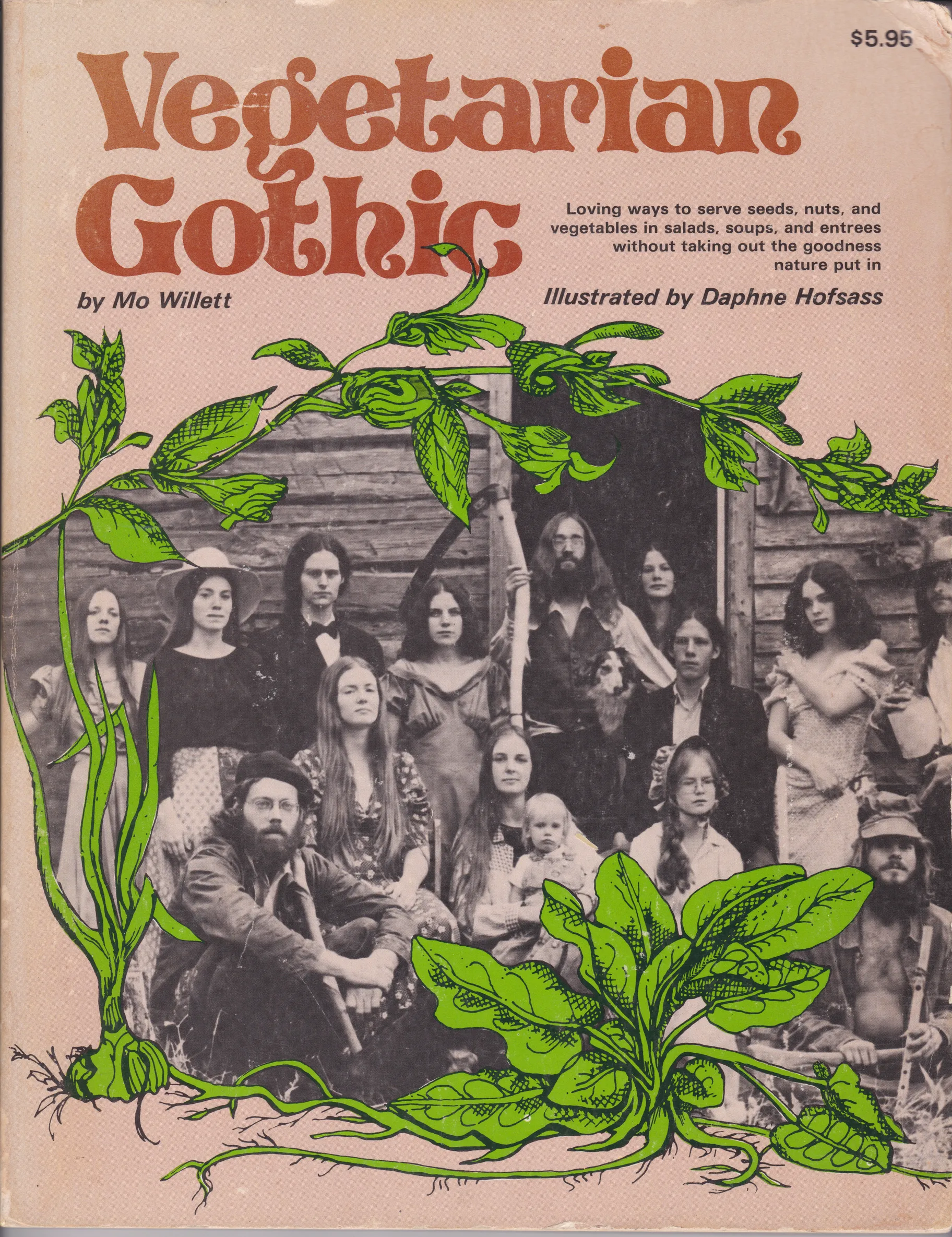
Front cover of 1975 edition of Vegetarian Gothic Cookbook. Photo courtesy of Christina Ward.
Tell me about the overlap between religion and the organic and macrobiotic food movements. When do we see that start? And where does it play out most prominently?
It's so interesting how macrobiotics as an idea wanes and waxes in popularity in the United States. It made its entrance in the 1930s. It was begun in Japan and it was really inspired by the German naturopath movement as well as Buddhist ideas about seasonality. Ideas are often traced back to India about hot foods and cold foods for different seasons. George Ohsawa combines all that together and develops this whole system of eating which is called macrobiotics. It's very popular in France, because that is where George Ohsawa was. It got brought to the United States by a few followers.
Michio Kushi's wife, Aveline Kushi, was a great cook and started doing cooking lessons in macrobiotic cooking in Boston. That is really where it took off, especially among the Harvard set. A lot of the universities in Boston were bringing over religious scholars from the east, from Buddhist and Hindu traditions, so there was a heightened awareness about cuisines and foodways and religious beliefs, especially from the east. That's how that got started. The Kushis eventually moved from Boston to Los Angeles, which is always a hotbed of new religious ideas and new food movements. They started their health food grocery store called Erewhon, "nowhere" spelled backwards. People may recognize Erewhon a bit today because it is not owned by the Kushis but is still a very popular health food grocery store. That's how that got started.
Religious cults are often called "high control groups" because they use psychological coercion to recruit, indoctrinate and retain members. How do they use food to exert a coercive power over people?
One of the better ideas about determining what is and what is not a cult is the BITE Model developed by Steven Hassan. It stands for Behavior, Information, Thought and Emotion. Under the behavior part of it, that's where you can get a lot of control regarding food. You are regulating their food intake, when they eat, how they eat, who they eat with, prescribing fasts, also using it as punishment. That's actually very common in these high control groups, the withholding of food as a form of punishment for violating the group's rules.
It can also be used as an attractant sometimes, and this is where you get some of the really harmful groups that still have a food culture. Yogi Bhajan, when he wanted new acolytes when he was starting, he would make people take a garlic fast and eat raw garlic many times a day for three days in a row, as a way to filter people out. If they couldn't follow that very rigid rule, then he didn't want them because he'd know they're not going to follow any other rules. He had a phrase for it. He wanted to "separate the yogis from the bogeys." That's often how food is using these high control groups.
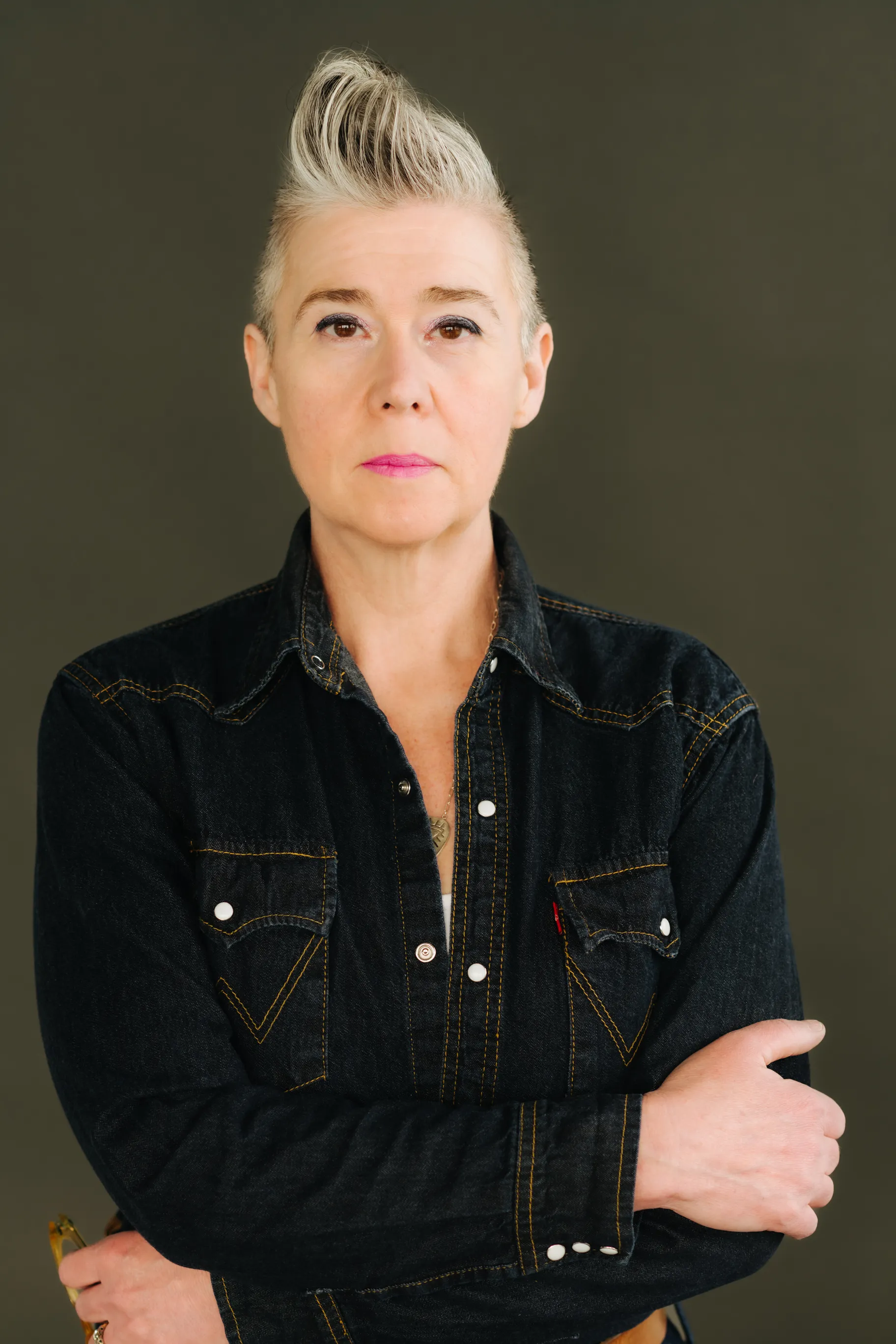
"I always call us a chaos machine," says food historian Christina Ward, describing the US. She examines the intersection of food and religion in her new book, Holy Food. Photo by Studio 29/Ren Lenhof.
All of these various religious groups and strains of thought have percolated through our society for years. What lasting influences have they had on the American diet? Are there things we're eating, or not eating, because of them?
Absolutely. First and foremost, going back to Seventh Day Adventists, I think of Little Debbie's. Little Debbie's are pretty cheap and many kids will find them in their lunchboxes. Part of the reason they're relatively cheap is because it's not chocolate, it's carob. The SDA was kind of anti-chocolate. They viewed it as a stimulant, so you see carob-covered things. There's the religious aspect of it because carob is also known by a localized religious name as St. John's Bread. At every grocery store in the country, you're going to find variation upon variation of Little Debbie snack cakes. That, I think, is one of the most lasting of the religiously-influenced foods that went mainstream.
There was a period of time when the most popular Good Food link, by far, was for funeral potatoes from the LDS. You have a recipe for them in the book.
I do. How can you resist a great combination of salty and fat? What we're talking about when we talk about "funeral potatoes" is a potato casserole with cheese and eggs. It's a really rich dish. People do variations and put different things in it, and everybody has a favorite version. A lot of the LDS food culture, especially food like the funeral potatoes, come out of that tradition we talked about earlier, of being an isolated community. When you're so insulated, you're trading the same recipes and you're eating the same foods. So it became an LDS tradition to take this particular potato casserole to a family after someone had died.
It's also part of the LDS tradition because it uses shelf-stable foods. The LDS were really great about food preservation. They experienced threats of starvation in their migration from the Mississippi River all the way to the Great Salt Lake. So food preservation is integral to LDS food culture. You could can potatoes. Cheese kept for a while. And if you had a cow, you could get some fresh milk. So that was a dish that you could prepare almost any time. It wasn't reliant on anything that you needed to wait for to be in season. That's a critical thing when you look at a lot of the LDS foods. They're really based on preserved foods.
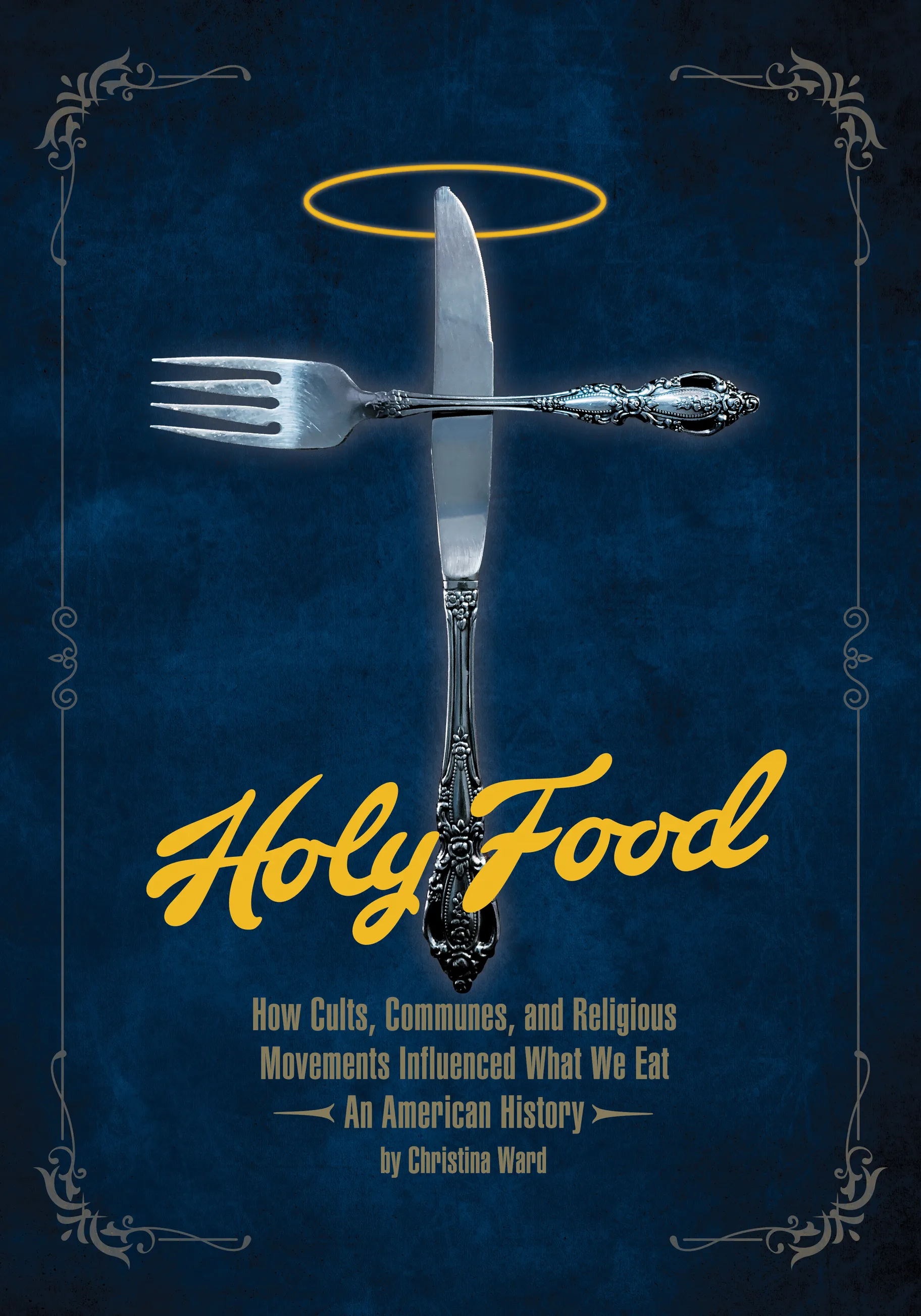
Holy Food: How Cults, Communes, and Religious Movements Influenced What We Eat — An American History, speaks to our appetite for morality. Photo courtesy of Process Media.
